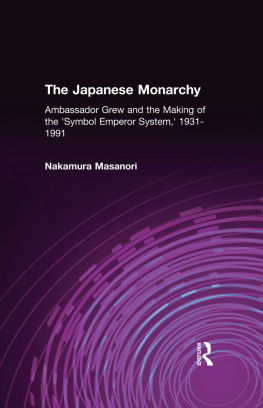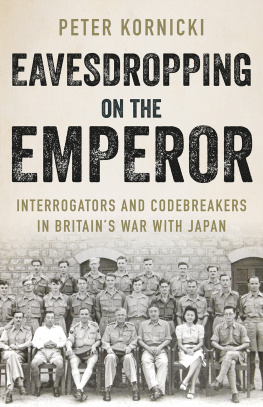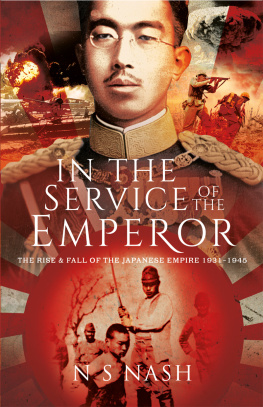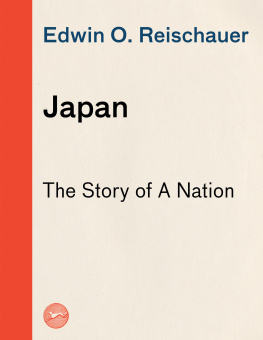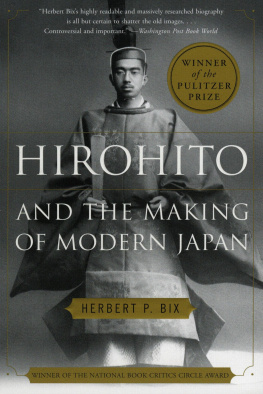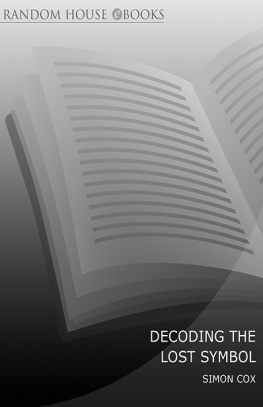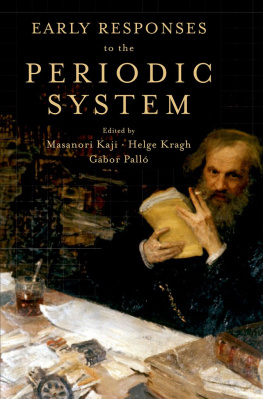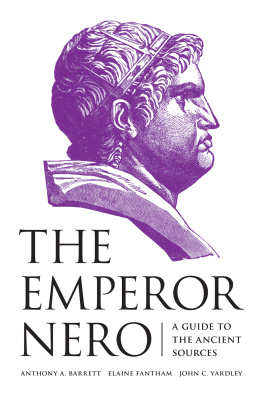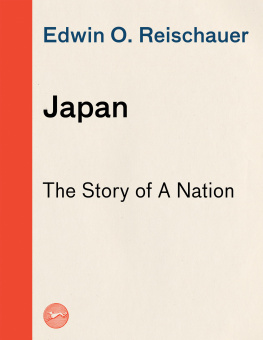An East Gate Book
First published 1992 by M.E. Sharpe
Published 2015 by Routledge
2 Park Square, Milton Park, Abingdon, Oxon OX14 4RN
711 Third Avenue, New York, NY 10017, USA
Routledge is an imprint of the Taylor & Francis Group, an informa business
Copyright 1992 Taylor & Francis. All rights reserved.
No part of this book may be reprinted or reproduced or utilised in any form or by any electronic, mechanical, or other means, now known or hereafter invented, including photocopying and recording, or in any information storage or retrieval system, without permission in writing from the publishers.
Notices
No responsibility is assumed by the publisher for any injury and/or damage to persons or property as a matter of products liability, negligence or otherwise, or from any use of operation of any methods, products, instructions or ideas contained in the material herein.
Practitioners and researchers must always rely on their own experience and knowledge in evaluating and using any information, methods, compounds, or experiments described herein. In using such information or methods they should be mindful of their own safety and the safety of others, including parties for whom they have a professional responsibility.
Product or corporate names may be trademarks or registered trademarks, and are used only for identification and explanation without intent to infringe.
Library of Congress Cataloging-in-Publication Data
Nakamura, Masanori, d. 1935 [Shch tennsei e no michi. English]
The Japanese monarchy, 19311991:
ambassador Joseph Grew and the making of the "Symbol emperor system" / by Masanori Nakamura:
translated by Herbert P. Bix, Jonathan Baker-Bates and Derek Bowen.
p. cm.(Asia and the Pacific)
"An East gate book."
Includes bibliographical references and index.
ISBN 1-56324-102-1. ISBN 1-56324-109-9 (pbk.)
1. JapanPolitics and government19121945. 2. Grew, Joseph C. (Joseph Clark), 18801965. 3. JapanForeign relationsUnited States. 4. United StatesForeign relationsJapan.
I. Title. II. Series: Asia and the Pacific (Armonk, N.Y.)
DS888.5..N34513 1992
952.03'3dc20
92-14157
CIP
ISBN 13: 9781563241093 (pbk)
ISBN 13: 9781563241024 (hbk)
The author of this book, Nakamura Masanori, was ten years old when he heard Emperor Hirohito announce the end of World War II. Growing up in wartime Tokyo, he was evacuated to the countryside to escape American bombing and later witnessed Japan's defeat and occupation by American armed forces. By the time Nakamura entered university in 1957, Japan's rise from the ashes of war was well underway; and when he published his first major work of history in 1972, Japan had catapulted into the front rank of economic powers and was reaping the benefits of uninterrupted economic growth.
Over me next ten years, however, as Japan continued its extraordinary economic growth, the political and economic milieu that had once been so congenial steadily eroded, while trade "frictions" and misunderstandings with the United States signaled the return of an increasingly conflictual international environment. At the same time, a more assertive Japanese nationalist sentiment began to manifest itself. Drawing strength mainly from the triumphs of the Japanese economy, the new nationalism also took delight in Japan's long history and in the imperial institution, whose postwar form was that of a "symbol" emperor system, which lent itself to diverse interpretations. The Showa Emperor reinforced this sense of pride in continuity with the past by his own persistent denial that defeat in war and constitutional revision had brought about any sharp break in the position of the monarchy under the new constitution.
in these circumstances. Nakamura began to reflect on the Japanese view of the emperor and the public debate about continuity and change in postwar history. Turning to the study of the Japanese-U.S. relationship during the watershed decades of the 1930s and 1940s, he sought to understand where the confusion in the constitutional specification of the emperor originated. While in residence at Harvard University in 1979 and 1980, he read the unpublished memoirs of Thomas A. Bisson, a leading Far East specialist who, during the 1930s and 1940s, had pioneered a radical critique of America's Asian policy. Shortly afterward he began studying the papers of Joseph C. Grew, the distinguished American ambassador to Japan during the decade 1932 to 1942. Skillfully using these and other contrasting English language sources, and querying scholars and witnesses in the United States and Britain, he proceeded to build his own image of Grew and to use him to scrutinize the role and position of the Japanese monarchy in the remaking of the Japanese-U.S. relationship after 1945.
The book that resulted from his research was published in 1989 under the title of Shch tennsei e no michi: Beikoku taishi Guruu to sono shhen (The road to the symbol emperor system: American Ambassador Grew and his contemporaries). In nine cogently argued chapters, Nakamura analyzes Grew's writings to learn how he viewed wartime Japan, its emperor and imperial institution, and what role Grew envisioned for the monarchy in a postsurrender state. Having returned to Washington in August 1942, nearly nine months after Pearl Harbor, Grew became in succession special adviser to the secretary of state, the director of the Office of Far Eastern Affairs, and, in 1944, under secretary of state to Cordeil Hull and later Edward Stetttnius and James F. Byrnes, in charge of planning for the defeat and surrender of Japan. In these important posts, he helped shape many basic decisions that still exert influence on the postwar Japanese state and on U.S.-Japanese relations.
The first notable feature of Nakamura's assessment of Grew concerns his relationship with those whom he called the "moderates" around the throne. Nakamura shows that Grew, who could neither read nor speak Japanese, subscribed to the views of people like Kabayama Aisuke, Shidehara Kijuro, Makino Nobuaki, and Yoshida Shigeru. Grew's Japanese contacts, in other words, were limited to business magnates, cosmopolitan admirals of the imperial navy who occupied high positions in government, pro-Anglo-American diplomats in the Foreign Ministry, and members of the emperor's entourage. Grew believed that these men, whose names he always tried to conceal, were Western-style liberals, cut in the mold of the Saltonstalls, the Sedgwicks, and the Peabodys, whom he had known from his days in Boston. They served as his pipeline to the emperor and provided him with their own "pendulum theory of Japanese history." According to this view, Japanese development alternated between periods of extreme nationalism and antiforeignism and periods of international cooperation and conciliation. Grew's innate optimism and his belief that the pendulum would soon swing in America's favor may account for the overly complacent view of Japanese politics found in his reports to Washington. As Japan moved ever deeper into war, Grew failed to grasp the dynamics of Japanese politics and, in the end, failed to understand that the court had formed an alliance with the military at the start of the 1940s that made the Pacific War possible.

